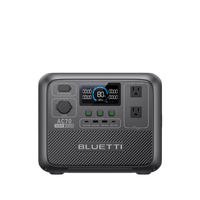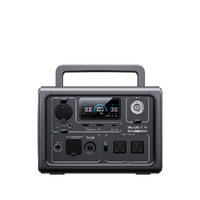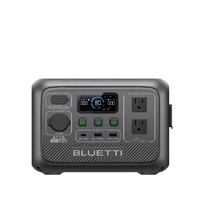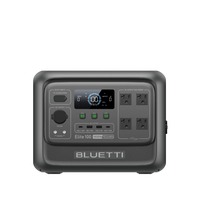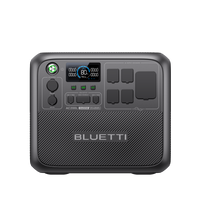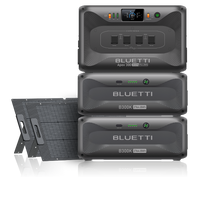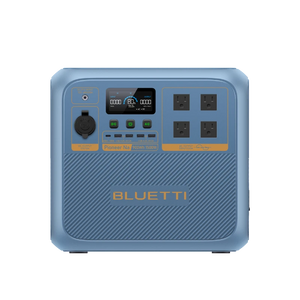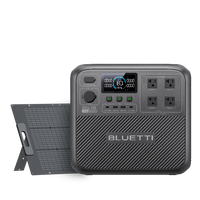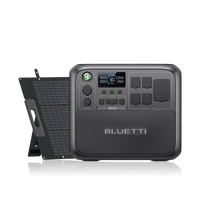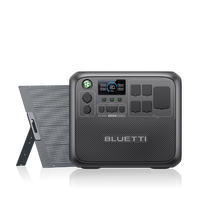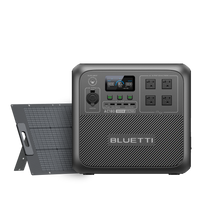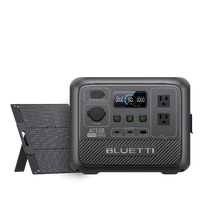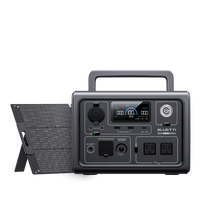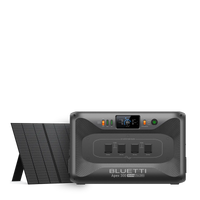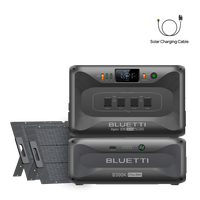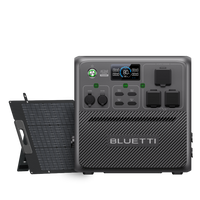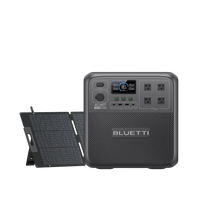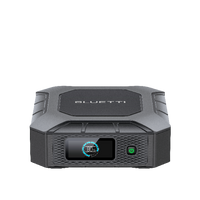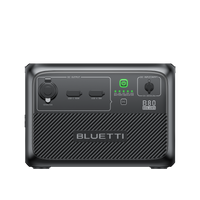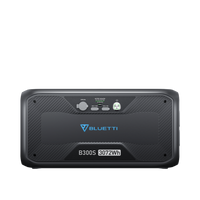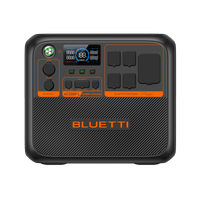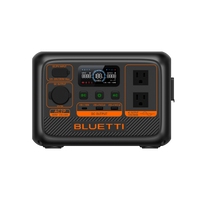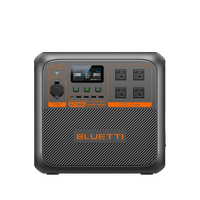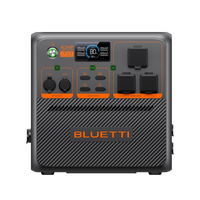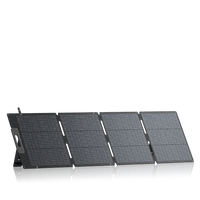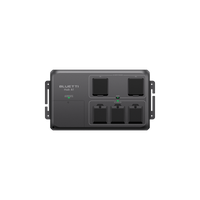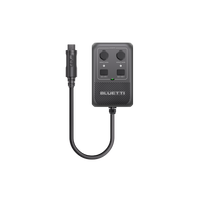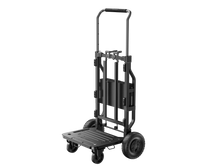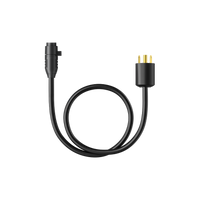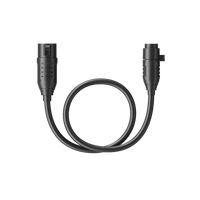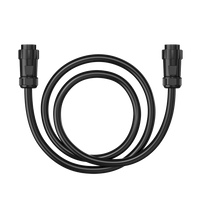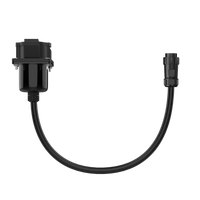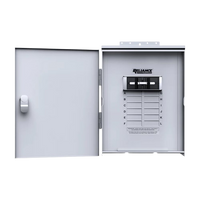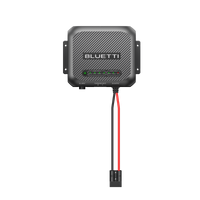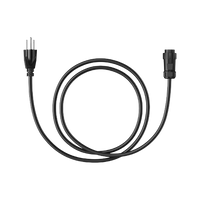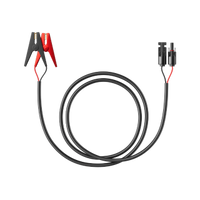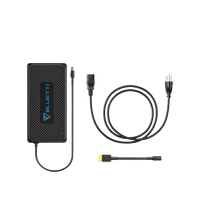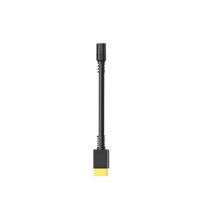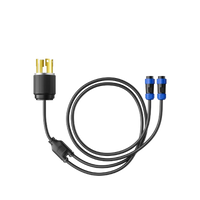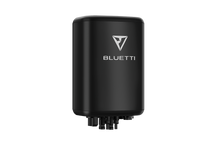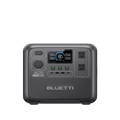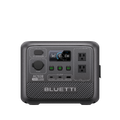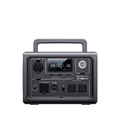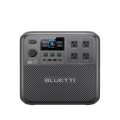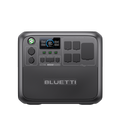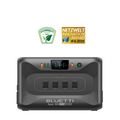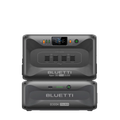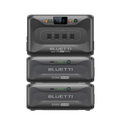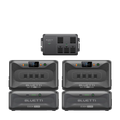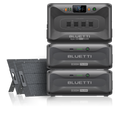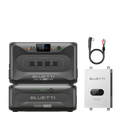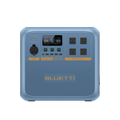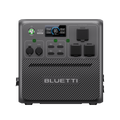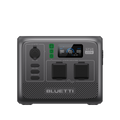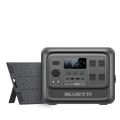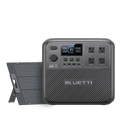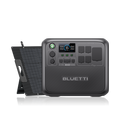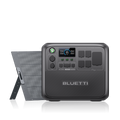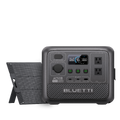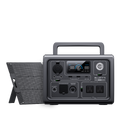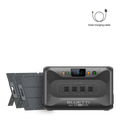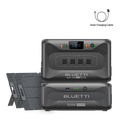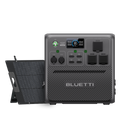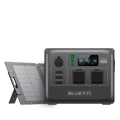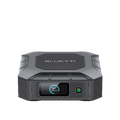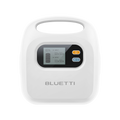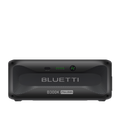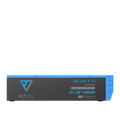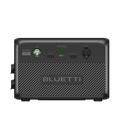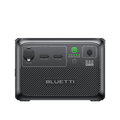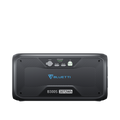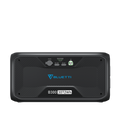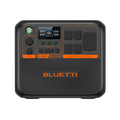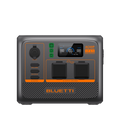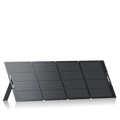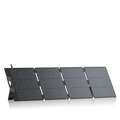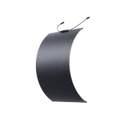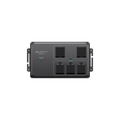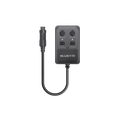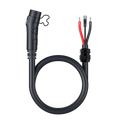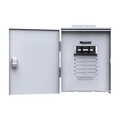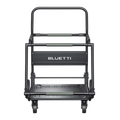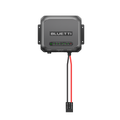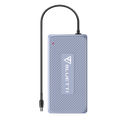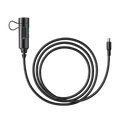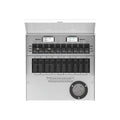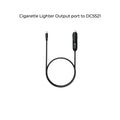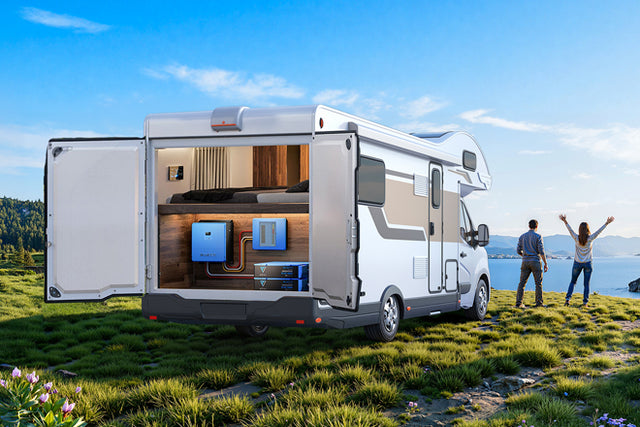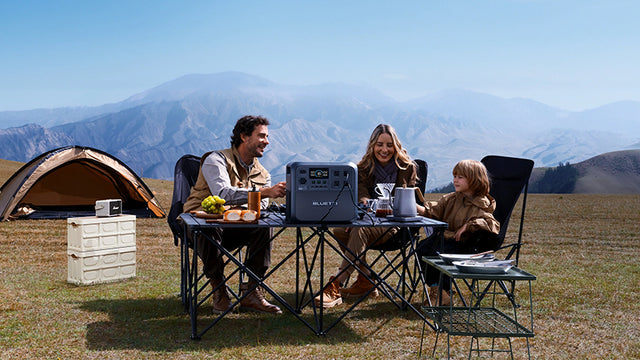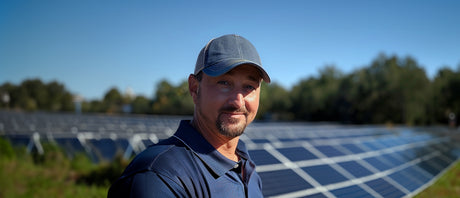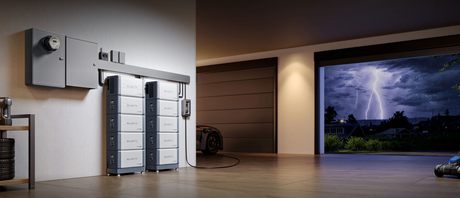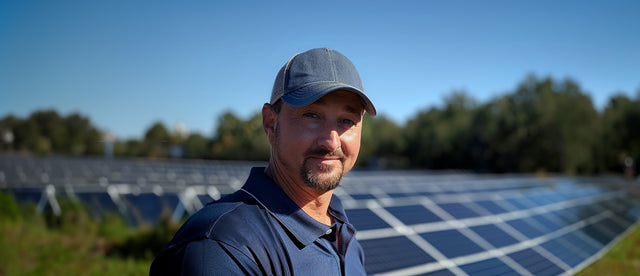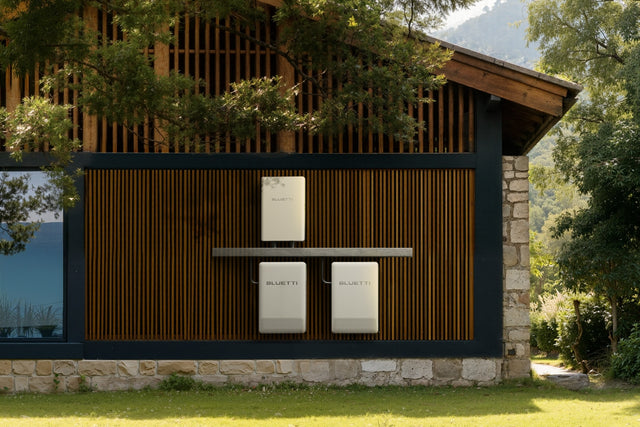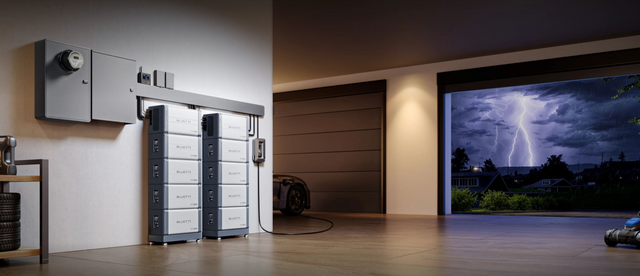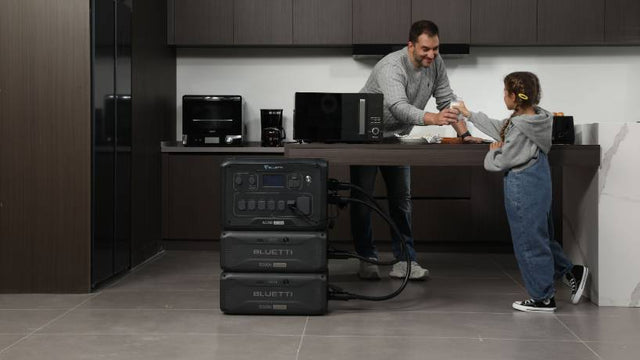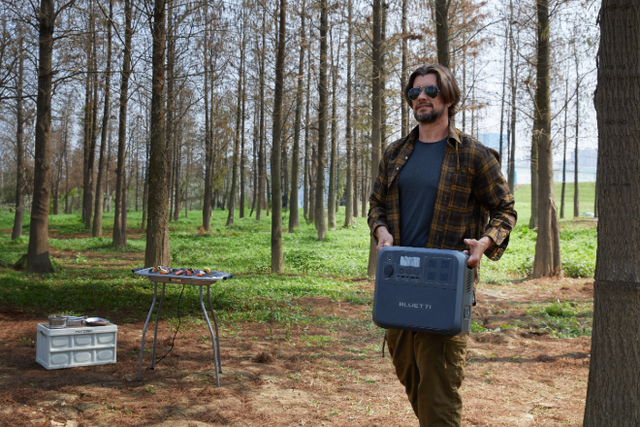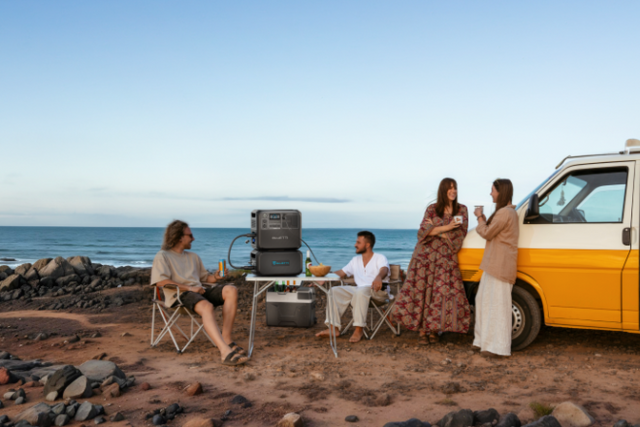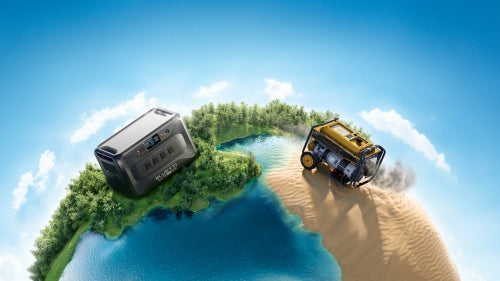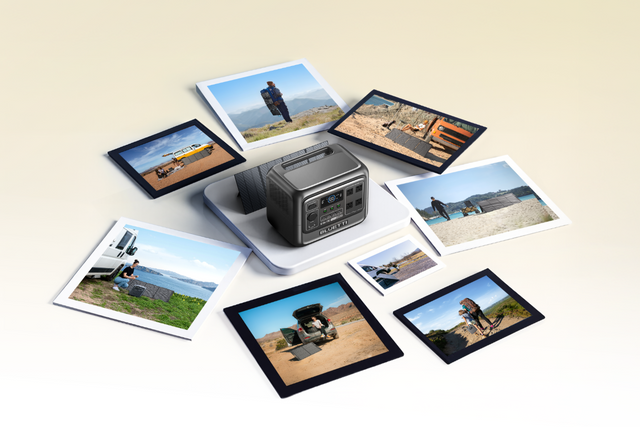Your cart is empty
Shop our productsThe straightforward response to "What is a portable power station?" is that it's a gadget that provides electricity, without fumes and guzzling gas. The device can be recharged via batteries and utilized to power appliances via outlets and USB ports. This renders it ideal in case of emergencies, camping, traveling, or off-grid, and unlike gas generators that utilize fuel to provide electricity.
This guide will share how portable power stations function, their key components and features, and advantages and applications. We will also tell you how to choose the right power station size, the efficiency of other sources of power, and tips on the maintenance and safety of a power station that are easy to follow.

How Do Portable Power Stations Function?
Portable power stations retain energy to be used in the future, much like massive and all-in-one power banks. To charge an internal battery, they employ various means, including wall outlets, automobile chargers, or solar panels. They then convert that stored energy into the correct form required by your devices. A power station is composed of three components, including charging, storage, and power delivery:
-
Charging: In this phase, the battery is filled up with power that may be sourced by AC or DC power or solar energy.
-
Storage: Energy is stored in the installed lithium or LiFePO₄ battery during the storage phase, in watt-hours (Wh).
-
Power Delivery: In the power delivery part, the inverter converts the DC stored power into AC to operate the electrical appliances, and there are DC and USB ports that directly charge smaller devices.
Key Components and Features of Power Stations
Here's a detailed outlook on the components that are included in power stations and the features these units offer:
-
Battery Capacity and Runtime
The battery capacity defines the amount of power that a portable power station can hold and the duration that it can provide power to your equipment. Capacity is known in watt-hours (Wh) or kilowatt-hours (kWh). An illustration is that a 50W device can be fed on a 500Wh unit and last approximately 10 hours. To estimate runtime, divide the battery capacity by the total power use of your devices.
Though actual performance is usually about 85–95% of that due to efficiency losses. Lithium-ion or LiFePO₄ batteries are most frequently employed in power stations. They have a considerably extended lifespan of over 3,000 charge cycles versus 500-1,000 in the case of the standard lithium-ion batteries.
-
Output Ports
Portable power stations have varying output ports to operate numerous devices simultaneously. Most possess AC outlets with pure sine wave inverters that let one operate laptops and other sensitive devices safely. For fast charging of phones, tablets, and laptops, the stations include USB-A and USB-C connectors. As well as the units also include DC plugs, such as 12V car outlets for small DC appliances.
-
Recharge Options
The portable power stations can be replenished in a number of ways, making them suited for several uses. The AC wall outlet is the quickest option, and some of these units may be charged in less than an hour with it.
Furthermore, solar panels combined with a station offer a green off-grid solution. But the rate of charge varies with the amount of sunlight and panel efficiency. A car charger is also included with a 12V or 24V outlet that is ideal in case of traveling and road trips.
-
Portability and Design
The ease of carrying and using the portable power station depends on its design. Smaller models are light, but larger ones can be quite heavy depending on the battery capacity. Many of them include embedded handles to simplify carrying. The largest ones have wheels that assist in moving them within their homes, camping grounds, or jobsites.
-
Durability and Protection
Portable power stations are designed in ways that are secure and long-lasting. Most of these are resistant to dirt and water. Some of them are suitable for outside since they can withstand light water and dust (IP65).
Furthermore, many stations have a Battery Management System (BMS) to avoid overheating, overcharging, short circuits, and other electrical issues. This lengthens the life of the unit and entitles it to run safely.

Advantages and Usage of Portable Power Stations
A portable power station is a combination of features present in a generator, UPS, and a large power bank in a single, safe, and easy-to-use unit. Here are its advantages:
-
Compatibility With Multiple Gadgets: You can ditch several adapters for a power station as it can recharge your phone, tablet, even your mini-fridge, and LED bulbs. All at once.
-
Noise and Fume-Free: A power station is as silent as the grave, has no fumes, and therefore can be plugged in anywhere inside or dragged into the backyard.
-
Zero Fuel Required: A power station could be charged on the wall, using a car outlet, or solar panels, and does not need any gasoline. This makes it fit for off-grid life.
-
No Upkeep & Complexity: Forget about oil changes, complicated setups, or reading a manual thicker than a dictionary. You just plug in and go.
-
Predictable and Dependable Energy: The best part is that the electricity many power stations deliver is clean due to the pure sine wave. So, your sensitive equipment like laptops, medical devices, and sound systems won't fry.
Primary Usage Scenarios
The following are different scenarios where you can employ portable power stations:
-
Emergency Home & Backup Power
Your fridge will still be efficient when the power outage hits (so your snacks will not be wasted), and your phone will function. In addition, in case you require the lights, laptops, WiFi router, fans, or even a CPAP machine, the unit can power them instantly.
-
True Off-Grid Living & Power
Whether you need to use a blender or recharge your laptop in the forest, it is all viable with a power station. You just have to put a solar panel on your roof, connect it to the station, and you are off-grid. This unit will absorb the daytime sun and will then expel energy at night, whether you're in a cabin, in a little home, or in some kind of workstation in a remote place.
-
Outdoor Recreation & Camping
Portable power stations have wholly changed the game for camping and van life. Forget just charging your phone. They'll operate your camera, fly your drone, keep the GPS alive, and power up your lights, cooler, fan, and even your coffee maker. Furthermore, they can power RV or van equipment and are devoid of the noise of the generator.
-
Travel & Road Trips
A portable power station is an all-encompassing device that keeps all your gadgets charged and ready. It can keep all the laptops, tablets, and phones running in the car and in an office in a hotel room, keeping the gadgets on during key calls.
-
Home & Hobby Use
Cordless power is made convenient at home with portable power stations. Out in the yard or around in the garage, you can grab your drill or your saw and plug it into the unit. There's no need to hunt for an outlet. Power stations are good for backyard parties, too. If you want to run a blender for margaritas or fire up a projector for movie night, there's no need to trip over a million extension cords.

Sizing and Selection Tips For Picking a Portable Power Station
Choosing the appropriate portable power station requires matching its power capacity to your requirements. Here's a basic manual to assist you in selecting the ideal unit:
Calculate Your Energy Needs (in Watt-Hours)
The first step is to discern your total energy needs to choose a power station with enough capacity (Wh). Here's how:
-
List devices and wattage: List every piece of equipment you will use and its functional wattage (found on tags or manuals). Examples: 60W laptop; 50W mini refrigerator; 10W LED light, and 5W smartphone.
-
Estimate runtime: Discern how many hours each piece of equipment will operate between charges.
-
Find the overall value in Wh: Multiply each gadget's wattage by its hours of use. Then add them up.
Example for a short camping trip:
-
LED light: 10W × 5h = 50Wh
-
Smartphone: 5W × 3h = 15Wh
-
Portable fan: 20W × 4h = 80Wh
-
Mini cooler: 50W × 6h = 300Wh
Total: 445Wh. So, considering efficiency, choose a 500–600Wh power station to cover usage and energy loss.
Crucial Selection Factors Beyond Capacity
After estimating capacity, look at these other crucial features that affect your selection:
-
Output Power & Port Selection
Examine the wattage of the power station to discern whether it can be used to run all the appliances at once. Using a case, a laptop (60W), a mini cooler (50W), a fan (20W), and a light (10W) adds to the total of 140W. Thus, a more powerful unit, such as 200-300W, is required. In case you desire to use power tools or refrigerators, make sure that the unit can also withstand power surges.
Don't sleep on the ports situation. You need the right mix. Your residential equipment might have AC ports, and your phone and laptop will probably have a USB-C or USB-A port. While your car accessories will have 12V DC jacks. So, examine what electronics you're trying to juice up and make sure the power station you pick can support them.
-
Recharge Speed & Methods
Check how long the station takes to fully recharge. AC wall charging is usually the fastest, with some models offering quick 1–2 hour charging. For off-grid use, look at the maximum solar input. The greater the power, the quicker the solar charging. Whereas charging cars is slower, however, practical on road trips and on-the-go top-ups.
-
Battery Chemistry for Longevity
Find out the type of batteries used in the portable station: NCM lithium-ion or LiFePO₄. The NCM lithium-ion batteries are lighter and great for occasional use. Whereas LiFePO₄ batteries cost more but last much longer (over 3,000 cycles) and are safer and more stable. They're ideal for frequent or long-term use.
-
Portability & Durability
Smaller stations (approximately 500Wh) are compact in size, whereas large (2,000Wh) ones can be more than 50 lbs. Select, therefore, depending on the portability that is required. To use a station outside, pick a rugged model that has a waterproof design, such as an IP65 rating, to ensure it remains dry and dust-free.
Recommended Portable Power Stations

In case you're interested in a good backup solution but something that's not giant yet great, consider the BLUETTI Elite 100 V2 Portable Power Station. It wrings 1800W (enough to power a mini fridge) and has a bulky battery of 1024Wh. Moreover, it can endure 2700W surge power without skipping a beat on your important electronics. The unit can power smartphones, laptops, LED lights, and so on in case of long power breakdowns. It also has ports like 140W USB-C PD, an additional 100W USB-C, and standard USB-A (2 x 15W, 5V/3A).
Besides, the Elite 100 V2 has numerous AC and DC ports and can be charged using AC, solar, dual AC + solar, and a generator. You can charge the unit with AC input up to 80% in 45 minutes, 100% in 70 minutes with 1000W solar, and 6x faster with a car charger. It can take 1,200W max AC input, 1,000W max solar input, and 1,800W AC charging + bypass input. Moreover, the unit has a 10ms UPS switchover, which gives regular power to crucial appliances during emergencies.

In case you aspire to have a larger unit to charge power-hungry devices such as a fridge or a microwave, then BLUETTI Apex 300 is appropriate for lengthy power cuts. It offers a 3,840W output and a 2,764.8Wh capacity. You can also expand the unit up to deliver 11.52kW output and 58kWh capacity to add Window ACs as well. Moreover, the unit features 2 x 100W USB-C ports, 2 × 15W, 5V/3A USB-A ports, and many AC and DC outlets. The unit also provides a 0ms UPS switchover to guarantee consistent power during emergencies.
The Apex 300 can be juiced up with AC, solar, dual AC + solar, and a generator. It is capable of reaching 80% in 40 minutes when receiving 2400W of solar energy, and 80% in 45 minutes when receiving AC power. The unit can also hit 100% in 60 minutes when it gets 3840W of power from AC + solar power, or a generator. With Solar X 4K, a 4000W solar charge controller, it can hit 4kW-30kW of solar input and can integrate with existing rooftop solar setups through AC coupling.
Furthermore, the Apex 300 offers a 12kW bypass for HVACs, EVs, and other power-voracious appliances and a BLUETTI app for extreme weather alerts. Both power stations are lightweight enough to take with you for camping, feature LiFePO₄ batteries, and a BLUETTI app to monitor battery performance and control voltage. They're also loaded with protection against overloading, overheating, short-circuiting, and low-temperature charging protection.

Portable Power Station Comparison With Alternatives
The following are the distinctions between portable power stations, gas generators, and small power banks. So, you can be certain which one to pick according to your needs:
Comparison of Portable Power Stations and Gas Generators
Portable power stations spit no fumes, and hence, it is safe to use them in the house. Moreover, they are easy to use, and no upkeep or fuel is required for them. By simply plugging them into their ports and outlets, these are perfect to power lights, gadgets, and little appliances at home or outside.
Conversely, gas generators are quite powerful, sometimes 5,000 to 10,000 watts or more. They're ideal to juice up power-hungry appliances like split ACs, refrigerators, freezers, or even an entire residence. Further, they are also able to run long enough, provided they are fuelled, and this comes in useful during prolonged electricity breakdowns. Their disadvantages, however, are that they are loud, emit toxic emissions, require frequent repairs, and should at all times be operated outside.
Comparison of Portable Power Stations and Power Banks
The distinction of portable power stations is their capability to operate virtually any AC-powered device and have a high-capacity battery. They are able to charge household gadgets such as laptops, mini-fridges, CPAP machines, and power tools, well beyond the capacity of standard power banks. Hundreds or even thousands of watt-hours allow them to power several gadgets for hours or even for days. Furthermore, power stations have all sorts of ports—AC, DC, USB-C, USB-A, you name it—jammed into one little unit.
Just to clear things up, compared to gas power stations, power banks are compact, light, and meant for you to actually carry around. We're talking about utilizing them for juicing up phones, earbuds, your smartwatch, and maybe even a small fan. They'll fit right in your backpack, no sweat. However, since they lack the power and hardware, they only charge USB devices and cannot operate appliances that need an AC outlet.
|
Category |
Portable Power Stations |
Gas Generators |
Power Banks |
|
Power Output |
Moderate power (hundreds to thousands of watt-hours)—can run small to medium appliances. |
High power (5,000–10,000+ watts)—can power large appliances or entire homes. |
Low power—mainly for small USB devices. |
|
Power Type |
Battery-powered (electric). |
Fuel-powered (gasoline, propane, or diesel). |
Battery-powered (USB output only). |
|
Use Cases |
Powering small or heavy appliances can provide partial or entire home backup. |
Powering large appliances such as refrigerators, split AC units, or entire homes during outages. |
Charging phones, earbuds, smartwatches, and small USB devices. |
|
Indoor Use |
Safe for indoor use (no fumes). |
Unsafe for indoor use (toxic emissions). |
Safe for indoor use. |
|
Noise Level |
Virtually silent. |
Loud. |
Silent. |
|
Maintenance |
No upkeep required. |
Requires regular maintenance and refueling. |
No upkeep required. |
|
Portability |
Portable and lightweight, but heavier than power banks. |
Bulky and heavy. |
Very compact and lightweight. |
|
Runtime |
Limited by battery capacity, it can last hours to days |
As long as fuel is available. |
Limited, it can charge small devices a few times. |
|
Ease of Use |
Plug-and-play, simple operation. |
Requires fueling and outdoor setup. |
Very easy, just plug in via USB. |

Power Station Maintenance and Safety Advice
Good treatment and employing safety steps ensure your portable power station stays functional and serves for a longer period. The following are some ideas for keeping and running the unit without any trouble:
-
Clean It Meticulously: Never use strong chemicals or water in ports, and wipe the power station's dust with a gentle, dry cloth.
-
Stash in a Dry Place: When it's not waterproof, do not set the unit out in rain or snow. Stash it at a 50°F-77°F temperature somewhere in a dry and cool place once you are finished with it.
-
Charge Wisely: Don't let the unit's battery sit around completely empty or charged to the max. But instead, aim for filling it between 40% and 60%
-
Storage Mode: Assuming this mode is available, leave the power station to control its charge automatically.
-
Periodically Recharge: In case of no use, check, and recharge the unit regularly every 3 to 6 months.
-
See instructions: Be sure to use only approved chargers and accessories by the manufacturer.
-
Enable Ventilation: Avoid blocking or concealing the airways of the power station.
-
Avoid Overloading: Don't fry your power station. But keep it under its max wattage.
-
Beware of the Temp: Keep the power station between 32°F and 104°F, and avoid pushing it beyond that limit.
-
Manage with Care: The unit is not resistant to dropping or hitting.
-
Trust Embedded Protection: Select a unit that has embedded protection against overloading, overheating, short circuits, and low-temperature charging.

FAQs
-
What differentiates capacity from power?
Capacity in watt-hours (Wh) will tell you the amount of energy a power station is able to store. Thus affecting the duration of time your gadgets can operate. Power in watts (W) reveals how much energy the unit can provide at once. This helps in discerning which equipment it can support.
-
Can you take a power station on a plane?
Yes, some smaller stations under 160Wh might be flyable with permission. Portable power stations up to 100Wh are allowed in carry-on without approval. 100–160 Wh power stations are allowed with airline approval. But most portable power stations go over the 100–160 Wh airline restriction and cannot be carried onto aircraft.
-
Can you utilize a power station while it's charging?
Most modern portable power stations do allow "pass-through charging"; therefore, you can use them while they charge. They're kept safe by the embedded Battery Management System, but always verify if your particular model features it.
-
How long do portable power stations last?
The number of full charges a power station can withstand before capacity reduction is dependent on its battery cycle life. Before falling to 80% capacity, models with LiFePO₄ batteries usually last 3,000–4,000 cycles, that is, approximately 8-10 years of regular daily use.
The Bottom Line
We have answered your queries regarding "What is a portable power station," and how to pick one, to the best of our ability. Portable power stations boast clean, noiseless, and dependable power when living off grid, camping, or experiencing electricity breakdowns. They need neither upkeep nor fuel. In addition, they suit both daily and emergency applications because they can provide a variety of charging options, such as wall, vehicle, and solar.
The BLUETTI Elite 100 V2 Portable Power Station (1800W, 1024Wh) would be suitable in the case of juicing up vital appliances such as phones, laptops, lights, etc. Whereas the BLUETTI Apex 300 (3840W, 2764.8Wh) can be connected to fridges, microwaves, or AC systems in case of long-term blackouts. Both units have embedded safety measures, extended LiFePO₄ batteries, and can be powered up rapidly.
Shop products from this article
Be the First to Know
You May Also Like


